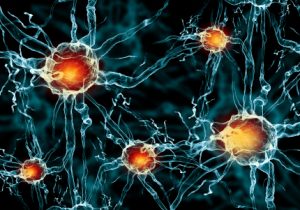Malpractice cases happen everyday in the United States and throughout the world. They cost millions collectively and can cost numerous hours as well. In some unique cases, mediation is sometimes the better option than a trial. There are many benefits to mediation as opposed to trial. Mediation takes less time from the physician, lessens the exposure of a public trial and having to testify as well as reducing the emotional toll of a trial. Ultimately, neither side wishes to fall under the decision of a civil jury and the uncertainty that follows with each individual. Hence mediation has many benefits and should be an option for any case.

Legal Nurse Consultants and law firms specialized in malpractice can help physicians and other healthcare professionals in malpractice cases and hopefully guide one to a mediation case over trial. If not, Legal Nurse Consultants within a firm, can also play a key role in helping the case.
The article, “Mediating the Medical Malpractice Case: Special Considerations and Strategies for Success” from Miles Mediation and Arbitration looks at the many benefits of meditation over trial as well as how to properly apply and utilize it in a malpractice case. The article states,
“Medical malpractice cases are expensive and time-consuming to litigate and require specialized knowledge and understanding of complex medical issues. Mediated settlement negotiations offer numerous advantages over jury trials. The emotional toll, expense, potential damage to reputation, and uncertainty of success at trial, among other things, make medical malpractice cases particularly well-suited for mediation.”
“Mediating the Medical Malpractice Case: Special Considerations and Strategies for Success”. Miles Mediation and Arbitration. April 7th, 2023.
To review the entire article, please click here
What is Medical Malpractice Mediation?

Medical malpractice mediation is a form of alternative dispute resolution where a neutral third-party mediator facilitates a discussion between the patient and healthcare provider to reach a mutually agreeable settlement. This process allows patients and healthcare providers to avoid the time, expense, and emotional toll of traditional litigation.
In mediation, the mediator does not make a decision or judgment regarding the outcome of the case. Instead, the mediator helps both parties communicate and understand each other’s concerns to reach a resolution that satisfies both parties. The process is voluntary and confidential, and both parties must agree to the terms of the settlement before it becomes binding.
The Drawbacks of Medical Malpractice Litigation
Medical malpractice litigation can be a lengthy and costly process for all parties involved. Patients often have to wait years for a resolution to their case, and the emotional toll can be significant. Healthcare providers also face significant financial costs, including legal fees, expert witness fees, and potential damages.
Furthermore, traditional litigation can be adversarial, with both parties fighting to prove their case and win in court. This adversarial process can damage the relationship between the patient and healthcare provider and can result in a breakdown of trust.
The Benefits of Medical Malpractice Mediation

Medical malpractice mediation offers several benefits over traditional litigation. First, mediation is typically a faster process than litigation. Mediation can be completed in a matter of months, whereas litigation can take years to reach a resolution.
Second, mediation is typically less expensive than litigation. Mediation fees are typically split between both parties and are significantly lower than the costs associated with traditional litigation.
Third, mediation is a collaborative process that allows both parties to work together to reach a mutually agreeable settlement. This collaborative process can help maintain the relationship between the patient and healthcare provider and can result in a more satisfactory outcome for both parties.
How Does Medical Malpractice Mediation Work?
Medical malpractice mediation typically begins with a joint meeting between the patient, healthcare provider, and mediator. During this meeting, the mediator explains the mediation process and sets ground rules for the discussion.
Following the joint meeting, the mediator typically meets with each party separately to discuss their concerns and interests. The mediator then facilitates a discussion between the parties to identify areas of agreement and disagreement and to work towards a mutually agreeable settlement.
Once an agreement is reached, the mediator drafts a settlement agreement, which is then reviewed by both parties and their attorneys. If both parties agree to the settlement terms, the agreement is signed, and the case is resolved.
The Role of the Mediator in Medical Malpractice Cases
The mediator plays a critical role in medical malpractice cases. The mediator is a neutral third-party who facilitates the discussion between the patient and healthcare provider. The mediator does not make a decision or judgment regarding the outcome of the case but instead helps both parties communicate and understand each other’s concerns.
The mediator also helps both parties identify areas of agreement and disagreement and work towards a mutually agreeable settlement. The mediator does not provide legal advice but may provide guidance on the mediation process and potential settlement options.
The Advantages of Using a Mediator in Medical Malpractice Cases
There are several advantages to using a mediator in medical malpractice cases. First, the mediator can help maintain the relationship between the patient and healthcare provider. The collaborative process of mediation can help both parties understand each other’s perspectives and work together to reach a resolution that satisfies both parties.
Second, mediation is typically less expensive than traditional litigation. Mediation fees are typically split between both parties and are significantly lower than the costs associated with traditional litigation.
Third, mediation is a confidential process, which can help protect the reputation of the healthcare provider. Traditional litigation is a public process, and the details of the case can be made public, which can damage the reputation of the healthcare provider.
The Effectiveness of Medical Malpractice Mediation
Medical malpractice mediation has been shown to be an effective alternative to traditional litigation. Studies have shown that mediation can result in higher rates of settlement and can be faster and less expensive than traditional litigation.
Furthermore, mediation can result in a more satisfactory outcome for both parties. The collaborative process of mediation can help both parties understand each other’s concerns and work together to reach a resolution that satisfies both parties.
The Cost Savings of Medical Malpractice Mediation
Medical malpractice mediation can result in significant cost savings for both patients and healthcare providers. Mediation fees are typically split between both parties and are significantly lower than the costs associated with traditional litigation.
Furthermore, mediation can result in a faster resolution to the case, which can save both parties money in legal fees, expert witness fees, and other costs associated with traditional litigation.
How to Choose a Qualified Medical Malpractice Mediator
Choosing a qualified medical malpractice mediator is critical to the success of the mediation process. When choosing a mediator, it is essential to look for someone who has experience in medical malpractice cases and has a thorough understanding of the healthcare industry.
It is also important to choose a mediator who is neutral and impartial and who has excellent communication and facilitation skills. The mediator should be able to help both parties understand each other’s concerns and work towards a mutually agreeable settlement.
Conclusion

Medical malpractice mediation offers several benefits over traditional litigation. Mediation is typically a faster, less expensive, and more collaborative process that can help maintain the relationship between the patient and healthcare provider. Mediation can also result in a more satisfactory outcome for both parties and can save both parties significant costs.
When choosing a mediator, it is essential to choose someone with experience in medical malpractice cases and excellent communication and facilitation skills. With the right mediator, medical malpractice mediation can provide a valuable alternative to traditional litigation for patients and healthcare providers alike.
Please also review AIHCP’s Legal Nurse Consulting Program and see if it meets your academic and professional goals. The program is online and independent study and open to qualified professionals seeking a four year certification in Legal Nursing.
Additional Resources
“Can You Settle a Medical Malpractice Claim Without a Lawsuit?”. David Goguen, JD. AllLaw. Access here
“Medical Malpractice Cases and Mediation: What to Expect”. DTAW. November 29th, 2020. The Tawwater Law Firm. Access here
“How Does Mediation Work in a Lawsuit?”. PON Staff. October 5th, 2020. Harvard Law School. Access here
“What Is Mediation?”. Christy Bieber, JD. April 24th, 2023. Forbes Advisor. Access here























